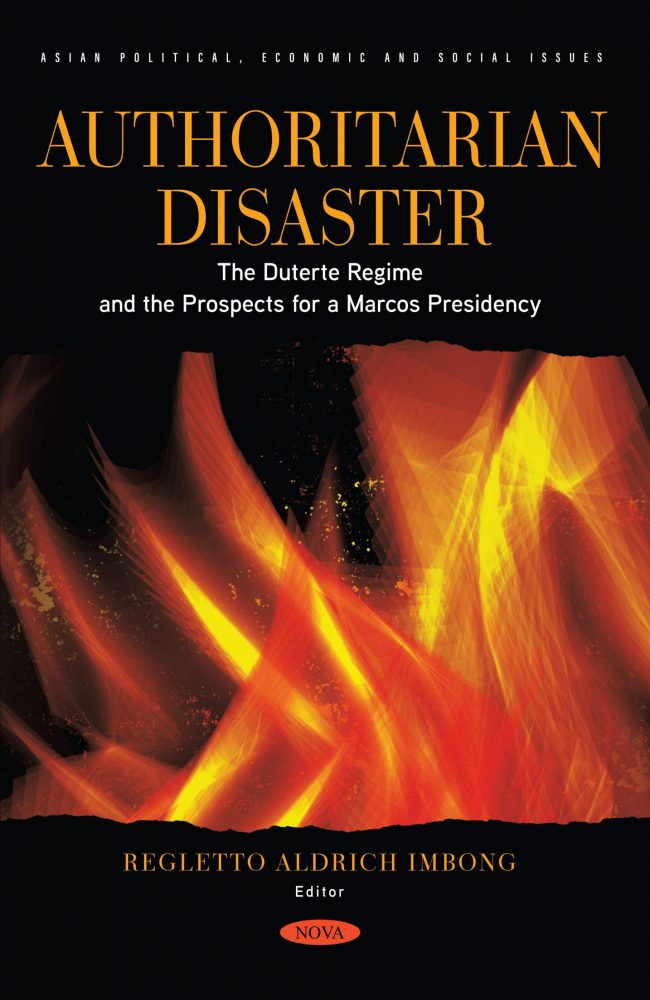Marie Rose Arong

Introduction
Rodrigo Duterte’s candidacy may have been officially announced in late
November 2015 but his rise in popularity, in the Visayas at least, was aided
by the dismal performance of then President Benigno Aquino’s administration when super typhoon Haiyan (known locally as Yolanda) struck the Mindanao and Visayas regions on November 7, 2013. A few days after the typhoon, Duterte visited Tacloban and offered “P8 million ($340,000) worth of relief goods and equipment” (Lacorte 2013). He also criticized President Aquino for merely declaring a state of calamity instead of a state of emergency “because there is no local government functioning anymore” (Lacorte 2013). This visit would foreshadow Duterte’s political narrative, in his eventual rise to the Philippine presidency: firstly, his assertion for a state of emergency declaration would signal his autocratic leadership style and secondly, the image of Duterte visiting the city of Tacloban would engrain itself in the psyche of the voters in the Visayan speaking regions when they cast their votes during the 2016 presidential election. Arguably, the Yolanda disaster that clung so strongly to the Aquino administration’s political party and its erstwhile presidential candidate, Manuel “Mar” Araneta Roxas II, more than Duterte’s strong stance against the illegal drug problem, is the turning point in Duterte’s political narrative that delivered his victory in “five Visayan provinces – Cebu, Bohol, Southern Leyte, Leyte and Biliran” (Tiongson-Mayrina and Barrientos-Vallarta 2016). In particular, the vote-rich Cebu province delivered more than a million votes for Duterte, almost double Roxas’s vote count.
What made the 2013 disaster so devastating for the future of the Aquino
administration’s political party was not only the “high toll of Yolanda super
typhoon casualties,” rather it was also the “slow relief operations and
rehabilitation” (Villamejor-Mendoza et al. 2018, 203). Yolanda is now
synonymous with a perceived incompetence in governance. Despite being
merely a mayor of Davao City at that point, Duterte’s decision not only to
offer financial aid and logistical assistance to Tacloban but also to personally visit the beleaguered city was a stark contrast to President Aquino’s quick and terse visit the previous day. So, the Yolanda moment in Duterte’s political narrative becomes more ironic, especially as his presidential term draws to a close in 2022. The very region that contributed to Duterte’s victory would again experience a typhoon disaster in December 2021 due to a similar incompetence. In a way, Duterte’s political narrative of change comes full circle: what began as a promise to do better ends in a similar manner as that of his predecessor, another failed attempted at “change.” In this chapter, I examine how Duterte’s autocratic leadership style engenders a Sisyphean cycle in his environmental management practices. In particular, I analyze Duterte’s disaster management strategies deployed for the typhoons that occurred during the first two years of the pandemic (2020-2021).
Link to the Article
https://novapublishers.com/shop/authoritarian-disaster-the-duterte- regime-and-the-prospects-for-a-marcos-presidency/